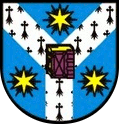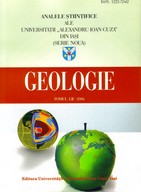The present study represents an attempt at highlighting the palynological assemblage identified
at the level of the Sarmatian deposits intercepted by the drilling from the Bilca–Frătăuţii Noi
area (Moldavian Platform).
The palynological results have been interpreted in order to establish the palaeoclimatic
conditions during the sedimentation of the studied deposits. Within the drilling in question, we
have identified taxa such as the following: Pityosporites microalatus, Pityosporites alatus,
Pityosporites labdacus, Pinuspollenites miocaenicus, Abiespollenites latisacatus,
Monocolpopollenites tranquillus, Tricolpopollenites liblarensis, Engelhardtioidites microcoryphaeus,
Leiotriletes sp. a. o. The method applied so as to estimate the values of the climatic parameters is
the “Coexistence Approach,” designed by Mosbrugger and Utescher (1997), a method that has
been frequently used for the reconstruction of the palaeoclimate from the European Tertiary. The
values obtained using this method for the Sarmatian deposits intercepted by the Bilca–Frătăuţii
Noi borehole are as follows: Mean annual temperature (MAT) 16.5–18.4°C, Mean annual
precipitation (MAP) 887–1281 mm/yr, Mean temperature of the coldest month (CMT) 9.6–133°C,
and Mean temperature of the warmest month (WMT) 27.3–28.1°C.
Copyright © 2011 Published by Ed. Univ. „Al. I. Cuza” Iași. All rights reserved.

English title
- SERIA
GEOLOGIE (AUI-G) - |

|
| Log in New account |
| Home | Main Page | Guide for Authors | Peer Review | New Articles | Events | Archive | Index | Contact us |

|
Article Palynologycal study of the Sarmatian deposits intercepted in the Bilca– Frătăuţii Noi borehole (Suceava County) (Moldavian Platform)
Mihaela Damian Jitaru - “Al. I. Cuza” University of Iaşi, Faculty of Geography and Geology, Department of Geology, 20A Carol I Blv., 700505 Iaşi, Romania View abstract as pdf file | View full article as pdf file Abstract: Keywords: Moldavian Platform, palynomorphs, Sarmatian, palaeoclimate, “Coexistence
Approach” |
copyright © 2024 Department of Geology |